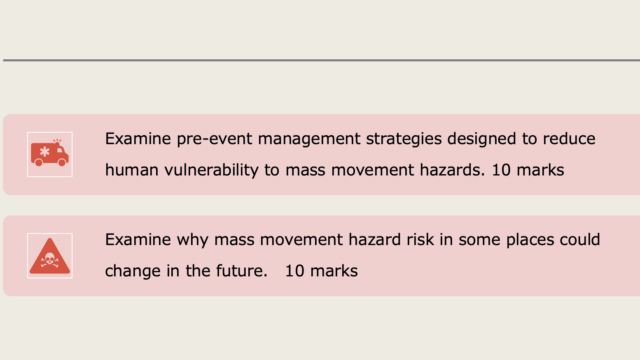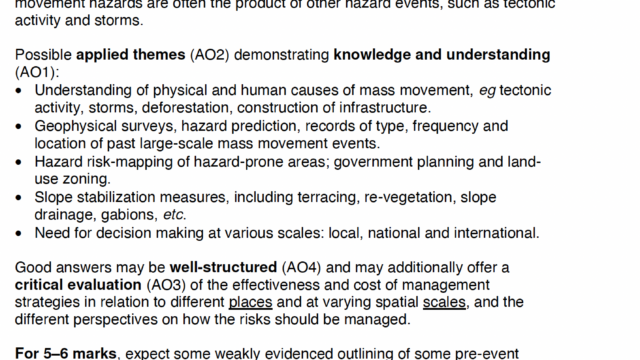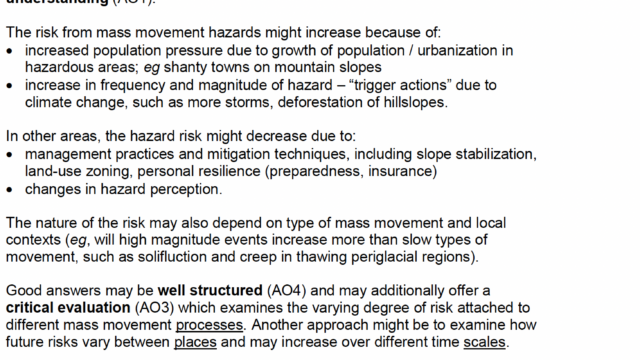Mass movements
Definition:
- Mass Movement
- Mass movement refers to the gravitational or downslope movement of weathered rock debris.
- Gravity is the primary force responsible for transporting materials downhill.
- Other transporting mediums such as water, wind, waves, and glaciers are not directly involved but can contribute to mass movement.
- Weakening internal cohesion and structural instability are the most common cause of mass movements.
- Landslides and Avalanches are the two most common types of mass movements.
- Landslides
- Landslides are the perceptible downslope movement of rock, debris, or earth.
- They are caused by a large volume and combination of rock, debris, soil, and water moving under the influence of gravity and water.
- Landslides can be triggered or aggravated by factors such as additional weight, seepage pressure, or lubrication.
- Methods of stabilizing hill slopes can help reduce the impact and vulnerability of landslide-related hazards.
- Avalanches
- Avalanches refer to the fall or rapid downslope movement of snow.
- They are caused by structural weaknesses or gravity.
- Structural weaknesses can include the existence of solid bedrock acting as a slide plane below weak material.
- Avalanches tend to occur in the same places and can be recurrent.
- Ski resorts are particularly prone to avalanches.
| Movement category | Types of materials | Speed of onset | ||
|---|---|---|---|---|
| Bed rock | Coarse | Fine | High (slope angle or gradient plays the major role) Low (water plays an important role) |
|
| Fall | Rock fall | Debris fall | Earth fall | |
| Topple | Rock topple | Debris topple | Earth topple | |
| Slide | Rock slide | Debris slide | Earth slide | |
| Spread | Rock spread | Debris spread | Earth spread | |
| Flow | Rock flow | Debris flow | Earth flow | |
| Creep | Rock creep | Talus creep | Soil creep/Terracettes | |
Factors that promote Landslides
Prolonged rainfall: Saturate soil and increase the possibility of soil movement
Removal of Vegetation: Roots bind the soil and intercept the water flow.
Rock type and Permeability: Permeable rocks get saturated quickly and is more likely to move than the solid bedrock
Construction of buildings and excavation: Increase weight on the slop and add to downward pull of gravity. Excavation is responsible for the undercutting of slopes and increases instability.
Methods of stabilizing slopes and reducing the risk landslides
Draining of extra water: This increases the shear strength of the rocks by reducing the pore-water pressure.
Terracing: Generates more stable angle
Toe stabilization and hazard resistant design by using retaining wall, anchors (rock armour), gabions: Retaining wall are used to stabilize the upper slope. Steel-mesh curtain are often used as retaining wall. The materials deposited at the slope foot (toe) are also stabilized by a retaining wall. Anchors are normally used at the upper slopes.




